 | Monthly project competitions, chances to earn prizes, you decide project themes, your ideas, your projects, turn ideas into projects. | Project14 Home |
| Monthly Themes | ||
| Monthly Theme Poll |
Three First Place Winners Earn a Shopping Cart of $100 from element14!
This month's theme is Cool LED Display and comes from dougw. Anything goes with this, you can use LEDs individually to create a display or come up with a creative way to utilize an existing LED display. An LED display build makes a great weekend project. For example, you can take a cheap microcontroller such as an Arduino, some LED pixels, some everyday items, and something you picked up from Ikea for your project. Or you can make a monochrome display, something with holiday spirit, an LED Cube, make an LED calculator, or do your own special lighting effects.
The only LEDs that were around for the first 10 years they were around were red visible light. Ten years later there was Green LED. In 1994, there was blue LED. You can get blue or green LED through a mixture of Gallium Nitride and Indium Nitride to get the blue, called Indium Gallium Nitride (INGaN).
Varying the amount of Indium in the mix varies the color of blue. Red, orange, and yellow LEDs use variants of Gallium Phosphide (GaP) Gallium Arsenide Phosphide (GaAsP) to get their hues. With white LEDs a blue or violet LED is coated with a phosphor that emits photons from the ultraviolet frequencies when the LED is energized.
The Birth of LED
Nick Holonyak Jr, the father of LED, developed the first visible-spectrum LED at General Electric in 1962. He grew up south of here in Chicago, in Southern Illinois, 80 miles from where I was born in St. Louis, and earned his bachelor's, master's, and doctoral degree at the University of Illinois at Urbana Champaign. As a 33 year old scientist working at GE, he invented the first visible light-emitting diode, a red LED.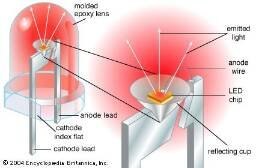
For the first 10 years, red LED was the only LED in existence. Ten years later there was green LED and yellow LED. It wouldn't be until the early 90s that blue LEDs went into circulation. This wasn't the only invention that Holonyak would be famous for. Beginning in the 80s and continuing through the 90s, when everything went digital including our music, another invention by Holonyak was the red-light semiconductor laser that was used by our CD players to read all those 1s and 0s.
Back when the only visible light-emitting diode was red, Holonyak boldly predicted, in the February 1963 issue of Readers Digest, that LEDs would replace the incandescent light bulb of Thomas Edison. He did this while still at GE, the company that owed its existence to Thomas Edison. Today that prediction seems quite plausible, LEDs can be seen everywhere, and LEDs are the undisputed, heavy weight champion of longevity.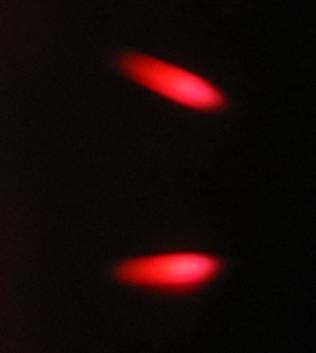
Holonyak is currently a John Bardeen Endowed Chair Emeritus in Electrical Engineering and Physics back at the University of Illinois at Urbana-Champaign where he's been since leaving General Electric in 1963. Interestingly enough Holonyak himself was once a student of John Bardeen, who co-invented the transistor.
In 1972, another fellow University of Illinois Alumnus and electrical engineer, M George Craford invented the first yellow colored LED for the Monsanto company gallium arsenide phosphide in the diode. He also invented a red LED that was ten times brighter than Holonyack's.
Also worth noting, is that Monsanto was the first company to mass-produce visible LED. In 1968, Monsanto produced red LEDs to be used as indicators, the light output from LEDs was limited in their usefulness to anything more than indicators. In the 1970s LEDs became popular as Fairchild Optoelectronics started producing low-cost LED devices for manufacturers.
When Holonyak returned to the University of Illinois he set up a lab with a small group of engineering and physics students. Like any great innovator he didn't set limits. Its probably this drive that's led him to change the world his remarkable innovations, besides the LED and the aforementioned laser that's used in CD players, his shorted emitter p-n-p-n switch is used in light dimmers and power tools.
Holonyak let his students know that they needed to beat the better-funded and larger teams at Bell Labs. Holonyak was able to channel his drive and ambition to his students and lead them toward the forefront of LED and laser technology. In 1972, a former student of his, an electrical engineer by the name of M George Craford, invented the first yellow colored LED for the Monsanto. He also invented a red LED that was ten times brighter than Holonyack's. Monsanto was the first company to mass-produce visible LED.
In the 1970s LEDs became popular as Fairchild Optoelectronics started producing low-cost LED devices for manufacturers.
Blue LED
Red and Green LED had been around for nearly 50 years until Shuji Nakamura, working at the Nichia Corporation, invented the first high brightness gallium nitride (GaN) LED whose brilliant blue light. Blue LED was first developed at RCA by Herbert Paul Maruska in 1972 but these initial LEDs were not very bright. High brightness gallium nitride (GAN) when partially converted to yellow by phosphor coating was the key to white LED, which went into production in 1993.
Nakamura's work drew on the work on another Japanese group led by Isamu Akansi who published their method of making strong p-type GaN through electronbeam irradiation of magnesium-doped GaN.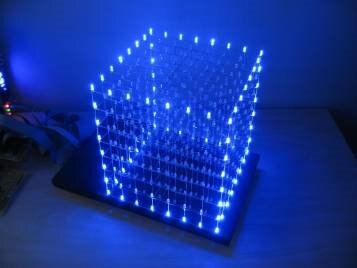
After they successfully manufactured blue LEDs in 1994, Nichia commercialized green LEDs the following year, and laser diodes in 1999 and Nakamuru was hired on as a professor at The University of California, Santa Barbara that same year.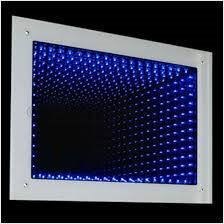
Nichia acquired many key LED patents and sold high quality LEDs, as for Nakamuru, he was given $180 for blue GaN LED invention when he left the company in the 90s. Nakamuru never signed a non disclosure form and turned around and sued Nichia for $180 million in compensation for his LED invention.
The Japanese court initially award Nakamuru $560 million for his invention but lowered the compensation to the amount Nakamuru had asked for in the complaint. After appeal, the case dragged on until both parties settled for around 7-8 million dollars, or the most money any Japanese Company had to pay through the Japanese courts. Nakamuru's lawsuit set a precedent for Japanese employees suing their employer.
Nakamuru has also done work on green LEDs and is responsible for also creating the white LED and blue laser diodes used in Blu-ray Discs and HD DVDs. In 2014, he was awarded the Nobel Prize for Physics "for invention of efficient blue light-emitting diodes, which enabled bright and energy-saving white light sources."
In the 1990s, Isamu Akasaki, Hiroshi Amano, and Shuji Nakamura are credited with the first high-brightness LED. Blue LED was first developed at RCA by Herbert Paul Maruska in 1972 but these initial LEDs were not very bright. Their breakthrough earned them the Nobel Prize in 2014, and paved the way for Holonyak's bold prediction about LEDs overtaking incandescent bulbs one step further.
With the blue LED, bright white light was now possible and we can now finally witness LEDs making serious inroads in making its ascension over incandescent bulbs a reality.
LED in Display Technology
LEDs had a Hollywood introduction to display technology. When Stanley Kubrick made 2001: A Space Odyssey in 1968 they attempted to give it a futuristic look by showing technology that never existed before. In search of clock display that had never been seen before he commissioned Hamilton Watch Company to make a clock with a futuristic display that used red LEDs to show the time.
Glowing red LED not only worked for the movie, it found its way into the real world. In 1972, The world's first all-electronic digital watch, and first with a digital display, debuted with a red LED watch. It was called the Pulsar Computer Watch and initially sold for $2100 or roughly $12400 today.While this watch was far from a commercial success, it forever changed the way we looked at time.
A semiconductor called alluminum gallium arsenid was used to emit the red light and green LEDs were later added by clock makers by using gallium nitride. Sort of as is the case with the Apple Watch today, because the LEDs used so much power you had to press a button each time you wanted to display.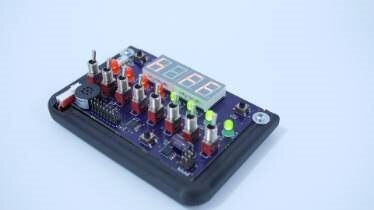
One of the major inroads LEDs have made, and relevant to this month's Cool LED Displays theme is in display technology. Perhaps you remember owning a red LED alarm clock, which became replaced by a green LED, and if you wanted to get one now you would have to get a blue LED alarm clock. A mainstream consumer watch under $20 didn't appear until Texas Instruments marketed their LED wrist watches in the mid to late 70s after costs came down and battery power was reduced. If you can remember red LED alarm clocks, you now know why that color was used.
Today, LED screens have largely replaced LCD screens and taking up much less space. LEDs have numerous advantages over other light emitting sources such as their efficient and low-energy consumption. An LED display consists of a number LED panels that in turn consists of several LEDs. LEDs also produce more brilliance and greater light intensity and can be found in a number of modern electronic devices such as smartphones, tablets, computer monitors, laptops, and more.
Your Chance to Win
| Come Up With a Clever Name | Stick to the Theme |
|---|---|
|
|
| Be Original | Submit Video Proof |
|
|
Your Project Examples
| Cool LED Display | |
|---|---|
| BeagleBone Black with 7-segment LED display | LED cube, control, design, and software |
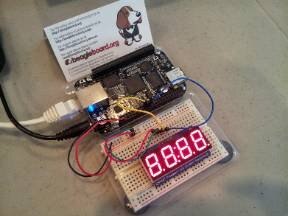 | 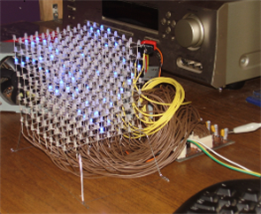 |
|
|
| The Monthly Theme You Voted for: Cool LED Display | |
|---|---|
|
|
| 6-Channel LED Sequence Arduino Vixen Lights | LED Animations |
|---|---|
Your Project, Your Ideas!
| About Project14 | Directions |
|---|---|
Every month you'll have a new poll where you'll get to decide an upcoming project competition, based on your interests, that will take place a couple of months in advance. Themes are broad in scope so that everyone can participate regardless of skill set.
What are Monthly Themes?
What are Monthly Theme Polls?
| Step 1: Log in or register on element14, it's easy and free. Step 2: Post in the comments section below to begin a discussion on your idea. Videos, pictures and text are all welcomed forms of submission. Step 3: Submit a blog post of your progress on your project by the end of the month. You are free to submit as many blog entries as you like until the beginning of the next theme.
Be sure to include video proof of your project!
Visit: Cool LED Display
You have until January 14th, 12:00 AM CDT to submit your completed project!
A jury consisting of your peers will judge project submissions! |
Give Us Your Cool LED Ideas in the Comments Below!
You have until January 14th, 12:00 AM CDT to submit your completed project!


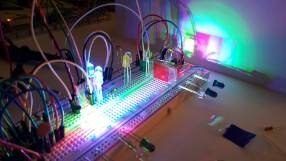
Top Comments
-

rsc
-
Cancel
-
Vote Up
+3
Vote Down
-
-
Sign in to reply
-
More
-
Cancel
-

tariq.ahmad
in reply to rsc
-
Cancel
-
Vote Up
+4
Vote Down
-
-
Sign in to reply
-
More
-
Cancel
Comment-

tariq.ahmad
in reply to rsc
-
Cancel
-
Vote Up
+4
Vote Down
-
-
Sign in to reply
-
More
-
Cancel
Children